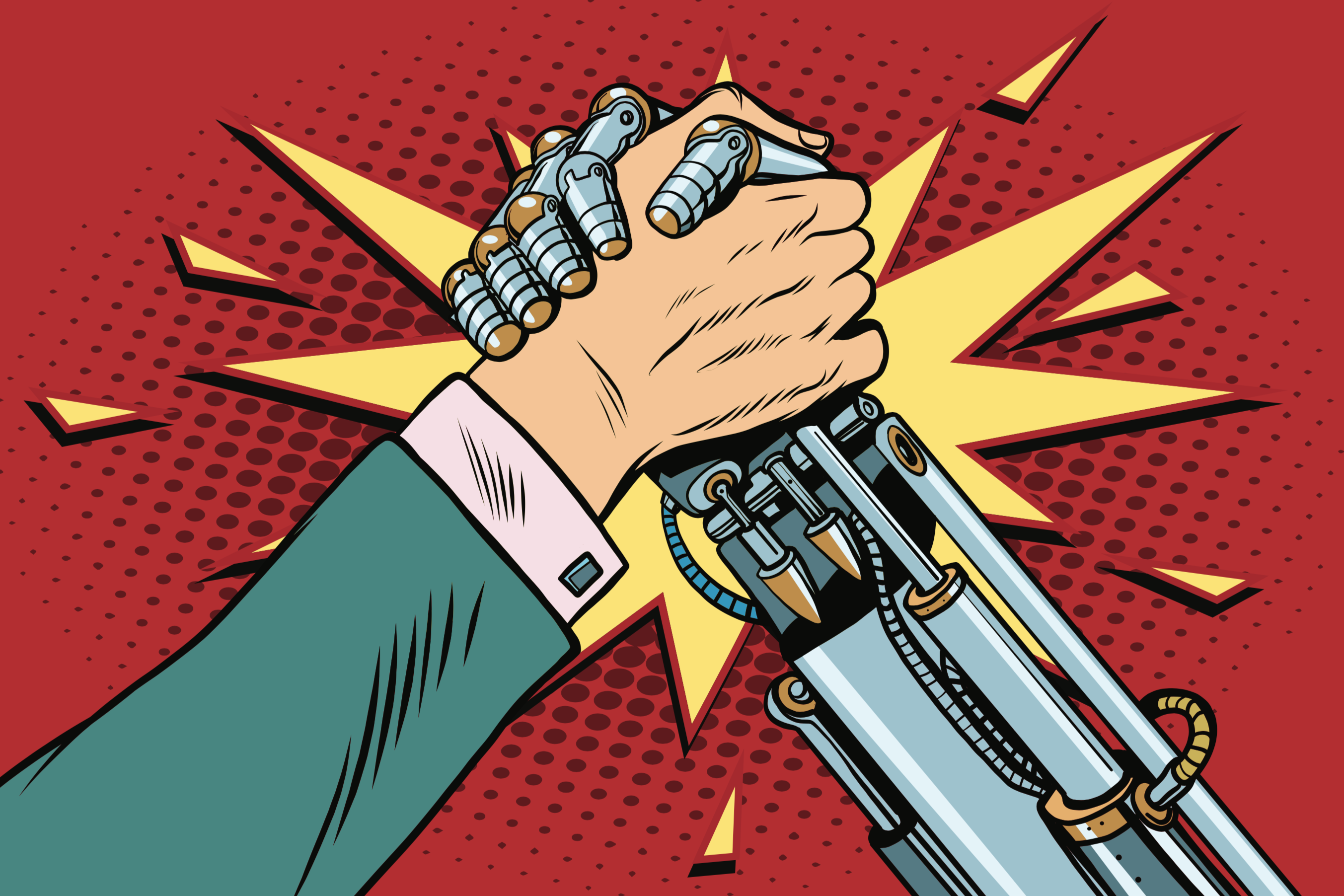
Forces for Good: Janji, Part 1
Running apparel brand. Clean water provider. Passport to adventure. An interview with Janji co-founder, David Spandorfer.



How might the IKEA effect benefit or hurt your business? Explore a framework that VOLTAGE uses to leverage the IKEA effect and create high-performance teams.
Running operations in a large company can be a mind-boggling game of chess, Tetris® and Monopoly all in one. While juggling strategy, resourcing and a bit of randomness, why not leverage a natural effect to align team members and produce extraordinary results? In this article we’ll take a look at the IKEA effect and how it could benefit or hurt your business. Then we’ll explore a framework that VOLTAGE uses for leveraging the IKEA effect to create high-performance teams.
The IKEA effect, coined by Harvard Business School, can be defined as:
“A cognitive bias in which consumers place a disproportionately high value on products they partially created.”
Wikipedia
In one experiment, subjects were asked to assemble IKEA furniture. Afterwards, those subjects were willing to pay 63% more for the furniture they had just assembled over pre-assembled (and identical) IKEA furniture. The time and effort put into assembling the furniture gave subjects a sense of pride and accomplishment, adding value to the result in their eyes.
The more time and effort expended, the greater the emotional attachment. The epitome of this phenomena is the love a parent has for their child. After years of sacrifice, it’s no wonder that every parent loves their own child more than they do the kids down the street.
The IKEA effect can be either an asset or a liability to business teams. Perhaps a team has built their own inefficient processes and culture over time, causing them to feel that those are valuable and special and should not be changed. Let’s explore a few bad habits that may need to be broken.
The IKEA effect can multiply the damage a team incurs if they fall victim to the sunk cost fallacy.
“The sunk cost effect is manifested in a greater tendency to continue an endeavor once an investment in money, effort, or time has been made.”
Hal Arkes and Catherine Blumer. (1985), The psychology of sunk costs. Organizational Behavior and Human Decision Processes, 35, 124-140
In other words, the sunk cost fallacy is the idea that a team is more likely to continue a project if they have already invested significant time, money or effort into it, even if continuing the project is no longer the best decision.
For example, “We’re $3MM into project XYZ which is projected to bring in $5MM. We now realize that the project will take $10MM total to complete. It was a lot of work to organize the project, and resources are already allocated. Plus we’ve already spent $3MM… so let’s keep going.” Stop! End your out-of-control project today and end up $3MM in the hole now rather than $5MM in the hole later.
Unfortunately, the IKEA effect makes it even more difficult for individuals to leave behind a failing project. They may have poured their heart and soul into the project for a significant amount of time, and now their boss tells them to scrap it. This can present a real challenge for all involved parties.
The IKEA effect can also exacerbate teams suffering from unhealthy status quo bias.
“Status quo bias is evident when people prefer things to stay the same by doing nothing or by sticking with a decision made previously.”
Samuelson, & Zeckhauser, 1988
A business team can clearly fall victim to this school of thought. You may have heard team members comment “That’s how we always do ABC,” “It’s not perfect but it works,” or “That’s above my paygrade.” These may be symptoms of status quo bias. Now throw in the IKEA effect. Not only are these old habits unhealthy, but they are reinforced because of the investment employees have contributed over time towards these behaviors.
How might the IKEA effect improve team performance? If a team is aligned and focused on the correct business outcome, the IKEA effect can accelerate and magnify the team’s process and output. Allow me to share a simple framework that we provide to our clients and their teams: Focus > Measure > Experiment > Improve.
Give a team ownership over one primary business outcome. Teams need focus. Otherwise, they aren’t teams, they’re individuals. Everyone should be clear on which goal or metric is priority #1.
A team’s primary business outcome should be largely independent of other teams. In other words, the team should be enabled to succeed even if some other team isn’t performing like they should. Yes, we want inter-team collaboration, but we also don’t want one bad apple ruining the bushel.
Once focus is established, protect the team from distractions. When a team member makes a mistake, peers may understand that the offending member was simply doing their best to achieve the same goal that everyone else is pursuing. This adds an extra level of safety and trust.
Allow the team to create instrumentation (again, largely independent from other teams) to measure their contributions toward the business outcome. Everyone on the team needs this visibility, and so does management. When outcomes are subpar, the team will motivate each other to try again. When desired business outcomes are met, the team will celebrate and look for bigger challenges.
Before making any changes, improvements or new initiatives, spend the time to set up appropriate data measurement and display. You can’t intentionally improve if you can’t measure results.
Now that the team has focus and can measure their success, give them space to collectively improve their primary business outcome through experimentation. The team hypothesizes, tests, learns and improves together. Feedback returns quickly to the team through their measurement instruments. Once again, this process should be mostly independent of other business teams so there is as little friction as possible to make changes and achieve goals.
Accelerate team progress by giving them access to the variety of skills they need to succeed while at the same time limiting the amount of access to those resources. In other words, the team should have a budget. With a budget, teams are encouraged to be creative and innovative in improving their business outcome without limiting their solutions to a predefined set of in-house skills. Don’t worry about how the team reaches success so long as they do it within budget constraints.
The entire Focus > Measure > Experiment > Improve process outlined above takes time and effort. If you can get your team excited about the process, the process becomes their own way of working. It becomes their own IKEA furniture, and the team will value, defend and accelerate their process.
At VOLTAGE, we help our clients leverage the IKEA effect in three ways:
Having a process that team members make their own is a great first step. Providing all the skills opens possibilities. Reinforcing that process through state-of-the-art online tools transforms individual team members into a high-performance team.
Have you ever had to learn some new online software or tool? Have you ever thought “Oh great, one more thing to figure out.” Once you tried it out, did the new tool do exactly what you needed it to do?
We create software tools with our clients and for our clients. Our tools are typically designed to codify the team’s focus, measure results and allow for experimentation and improvement.
In our design process, we strategically collaborate with the team. This helps us tackle the most important features first while creating buy-in from the team. The IKEA effect begins to take place. We tend to encourage automation of repetitive tasks such as making calls, sending text messages or emails, creating calendar invites, gathering metrics, making spreadsheets, generating reports, etc. We do everything we can to free up intelligent team members so they can think strategically and improve their business outcome. This is precisely what your team members want to do anyway: solve real business problems.
As we launch and iterate, team morale rises. We guide them in optimizing and improving their strategies and processes. By the time we’ve made a few rounds of feature releases, the team feels like the process and the tools are their own. A high-performance team soon emerges. A strong level of IKEA effect ultimately results in individuals’ extreme commitment to the team’s success.
The next time you consider how to motivate and improve your team, consider how they could take great pride in molding software tools that refine their focus, provide measurable insights and allow an iterative process. You will have better insight into their successes, and they will become high-performing champions.
VOLTAGE is a digital agency specializing in eCommerce, digital brand experiences, and web apps. Get emails and insights from our team:

Running apparel brand. Clean water provider. Passport to adventure. An interview with Janji co-founder, David Spandorfer.

Running apparel brand. Clean water provider. Passport to adventure. An interview with Janji co-founder David Spandorfer. Part 2 of 2.